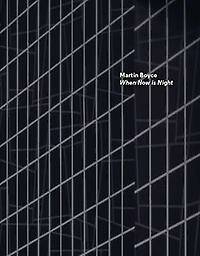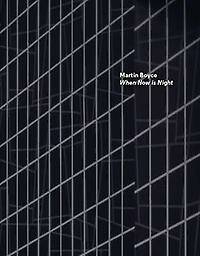
Door een staking bij bpost kan je online bestelling op dit moment iets langer onderweg zijn dan voorzien. Dringend iets nodig? Onze winkels ontvangen jou met open armen!
- Afhalen na 1 uur in een winkel met voorraad
- Gratis thuislevering in België vanaf € 30
- Ruim aanbod met 7 miljoen producten
Door een staking bij bpost kan je online bestelling op dit moment iets langer onderweg zijn dan voorzien. Dringend iets nodig? Onze winkels ontvangen jou met open armen!
- Afhalen na 1 uur in een winkel met voorraad
- Gratis thuislevering in België vanaf € 30
- Ruim aanbod met 7 miljoen producten
Zoeken
Omschrijving
Best known for his powerful sculptures and installations, Scottish artist Martin Boyce reconfigures everyday elements into alternate realities. Garbage cans are lopsided, trees consist of straight lines, and air-vent grilles become objets d'art. Heavily influenced by modernism, Boyce often incorporates well-known objects by mid-twentieth-century designers into his work, such as the Eames Storage Unit or the four concrete trees by Joel and Jan Martel for a 1925 garden. By reinventing or deconstructing them for his installations, Boyce critically reflects on the legacy of modernist design. When Now is Night is the most significant monograph on the artist-who won Britain's coveted Turner Prize in 2011-in a decade, providing an overview of his career with an emphasis on work from recent years. While his practice is frequently considered in relationship to modernism and the specific precedents he draws on, this book places a greater emphasis on the narratives he develops within individual works and the process involved in creating them. This shift in focus will encourage new insights into Boyce's work, making it an invaluable resource for admirers and scholars alike.
Specificaties
Betrokkenen
- Auteur(s):
- Uitgeverij:
Inhoud
- Aantal bladzijden:
- 144
- Taal:
- Engels
Eigenschappen
- Productcode (EAN):
- 9781616894030
- Verschijningsdatum:
- 30/10/2015
- Uitvoering:
- Paperback
- Afmetingen:
- 180 mm x 230 mm
- Gewicht:
- 562 g

Alleen bij Standaard Boekhandel
+ 53 punten op je klantenkaart van Standaard Boekhandel
Beoordelingen
We publiceren alleen reviews die voldoen aan de voorwaarden voor reviews. Bekijk onze voorwaarden voor reviews.











